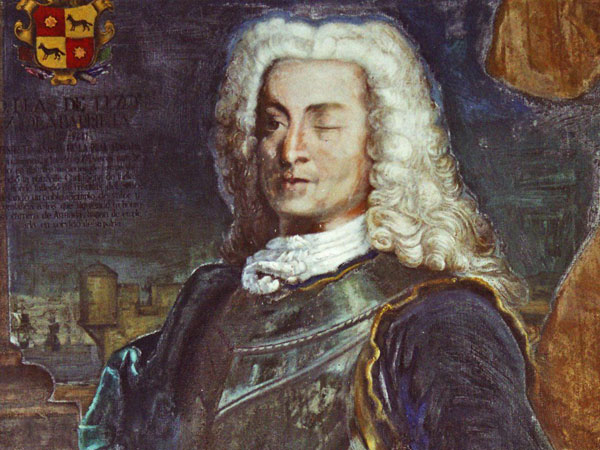The Argentine website Infobae today brings us an article about the history of a Basque man from Pasaia. In Cartagena de Indias, he, with 3,000 men, defeated what is considered the second largest invasion force in history, behind only the Allied invasion of Normandy. This British force was made up of over 180 ships (including combat and transport vessels) and 31,400 men.
Blas de Lezo, the Basque admiral at the service of the Spanish empire, known as the “Halfman” due to the loss of a hand, an eye, and a leg in battle, was able to snatch victory from the jaws of defeat. This was all happening in the context of a war in which the Spanish Empire risked losing control of the routes between the New World colonies and the homeland to the emerging British powers, as it was coming up as the predominant power among the European kingdoms and empires, and had just imposed the Treaty of Utrecht on the Spanish Empire.
The attack on Cartagena de Indias was part of the War of Jenkins’ Ear, which had marked the start of the chipping away and eventual defeat of the Spanish Empire by the British Empire in the Battle of Trafalgar. But with his victory, this Basque admiral was able to fend off the end of the Spanish New World Colonies for another 60 years, which would inevitably have been lost if the Spanish Navy had lost control of the Atlantic.
Today the memory of this sailor is almost completely forgotten, by Spaniards and Basques. It is the Colombians who best remember him. He belonged to the distinguished group of Southern Basques who served the Spanish Monarchy with loyalty, honor, bravery, and courage at a time when the leaders of Spain still, at least in part, respected the freedoms of those Basque territories. The compensation for all this would end up coming a century later, when the Spanish stated started the slow process of eliminating any remaining Basque sovereignty south of the Pyrenees with arms. That’s how some people pay off their debts.
But in this case, the disgrace was experienced in person.
In Cartagena de Indias, political leadership was vested in Viceroy Sebastián de Eslava, who was always jealous of his subordinate. After his victory, Eslava wanted the glory of the triumph for himself, and feared that the war log Lezo had been keeping would reveal Eslava’s mistakes. So, he wrote to King Felipe V, reporting him for his “haughtiness and disobedience” and for being “unable to meet his obligations and that wish could and should be expected of him”.
When the news of the victory and Eslava’s letter reached the Court, the King promoted the Viceroy to Captain General, and with the Royal Order of October 21, sacked Blas de Lezo as commander, ordering him to return to the Peninsula to be court martialed. He didn’t know that Lezo had already died, on September 7, of illness and impotence. That decision left the Basque admiral’s family destitute. His wife could not even pay for his funeral, and no one knows where he was buried because it was in a common grave.
That was how Spain paid for his heroism and extraordinary military career. Carlos III restored him in 1760, posthumously granting him the title of Marquess of Ovieco. But this shameful behavior goes a way to explaining the silence and obscurity that are maintained about this Basque. Why would Spain make an effort to remember a person who would also remind them of a State and Government’s inability to ensure justice be done?
Infobae – 5/1/2012 – Argentina
El día que medio hombre derrotó a Inglaterra

Al vasco Blas de Lezo (1689-1741) le faltaba una pierna, un ojo y una mano, pero le sobraba cabeza y coraje: en un combate totalmente desigual contra una de las flotas más impresionantes jamás reunida, aquel teniente general de la Armada ibérica salvó al Imperio español al infligirle a Inglaterra una humillante derrota. Sucedió en Cartagena de Indias, hoy Colombia, por aquel entonces un puerto estratégico para la Corona española.
(Follow) (Automatic translation)
Last Updated on Dec 20, 2020 by About Basque Country




























